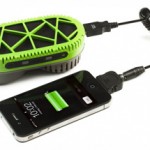Archive for 2011
Kinematics and workspace analysis of an exoskeleton for thumb and index finger rehabilitation
- Тип контента: Научная статья
- Номер документа: 565
- Название документа: Kinematics and workspace analysis of an exoskeleton for thumb and index finger rehabilitation
- Номер (DOI, IBSN, Патент): 10.1109/ROBIO.2010.5723307
- Изобретатель/автор: Ruoyin Zheng, Jiting Li
- Правопреемник/учебное заведение: State Key Lab. of Virtual Reality Technol. & Syst., Beihang Univ., Beijing, China
- Дата публикации документа: 2011-03-03
- Страна опубликовавшая документ: Китай
- Язык документа: Английский
- Наименование изделия: Не заполнено
- Источник: http://ieeexplore.ieee.org/search/freesrchabstract.jsp?tp=&a
- Вложения: Да
- Аналитик: Дмитрий Соловьев
 For the human hand rehabilitation, the palmar opposition is an important function to evaluate the recovery of hand motor capabilities. This paper proposes an exoskeleton-type hand rehabilitation assistive device which is able to be applied to index finger as well as thumb. The kinematics and workspace of index fingertip and thumb-tip are analyzed. The `opposition space’ is defined as the intersection of the workspace of thumb-tip and the index fingertip. A metric, what we call `opposition degree’, which is defined as the ratio of volume of opposition space to that of the index fingertip workspace, is proposed to present the available degree of opposition. As an example, the opposition degree of a human hand model is determined. This metric can also used to rate the ergonomic performance of the hand rehabilitation assistive device. This method can be applied to other fingers as well. The opposition simulation experiment is conducted to verify the kinematics of the proposed exoskeleton.
For the human hand rehabilitation, the palmar opposition is an important function to evaluate the recovery of hand motor capabilities. This paper proposes an exoskeleton-type hand rehabilitation assistive device which is able to be applied to index finger as well as thumb. The kinematics and workspace of index fingertip and thumb-tip are analyzed. The `opposition space’ is defined as the intersection of the workspace of thumb-tip and the index fingertip. A metric, what we call `opposition degree’, which is defined as the ratio of volume of opposition space to that of the index fingertip workspace, is proposed to present the available degree of opposition. As an example, the opposition degree of a human hand model is determined. This metric can also used to rate the ergonomic performance of the hand rehabilitation assistive device. This method can be applied to other fingers as well. The opposition simulation experiment is conducted to verify the kinematics of the proposed exoskeleton.
Категория: Научные статьи | Нет комментариев »
Инженеры научились заряжать мобильники водой
- Тип контента: Новостная статья
- Номер документа: 1945
- Название документа: Инженеры научились заряжать мобильники водой
- Номер (DOI, IBSN, Патент): Не заполнено
- Изобретатель/автор: Не заполнено
- Правопреемник/учебное заведение: Не заполнено
- Дата публикации документа: 2011-03-03
- Страна опубликовавшая документ: Россия
- Язык документа: Русский
- Наименование изделия: Не заполнено
- Источник: http://www.membrana.ru/particle/15805
- Вложения: Не заполнено
- Аналитик: Ридна Украина)))
 Точнее сказать, водой следует заправлять новое устройство, которое способно поставлять энергию для любой переносной электроники в чистом поле днём и ночью, поскольку не зависит от розеток или солнечного света. Инновация понравится военным, спортсменам и путешественникам.
Точнее сказать, водой следует заправлять новое устройство, которое способно поставлять энергию для любой переносной электроники в чистом поле днём и ночью, поскольку не зависит от розеток или солнечного света. Инновация понравится военным, спортсменам и путешественникам.
Категория: Энергия | 3 комментария »
Towards a guideline for clinical trials in the development of human assistive robots
- Тип контента: Научная статья
- Номер документа: 4074
- Название документа: Towards a guideline for clinical trials in the development of human assistive robots
- Номер (DOI, IBSN, Патент): 10.1109/ROBIO.2010.5723420
- Изобретатель/автор: Sankai, Y., Matsushita, K., Kawamoto, H., A. Kamibayashi
- Правопреемник/учебное заведение: Grad. Sch. of Syst. & Inf. Eng., Univ. of Tsukuba, Tsukuba
- Дата публикации документа: 2011-03-03
- Страна опубликовавшая документ: Япония
- Язык документа: Английский
- Наименование изделия: Не заполнено
- Источник: http://ieeexplore.ieee.org/Xplore/login.jsp?url=http%3A%2F%2
- Вложения: Нет
- Аналитик: Helix
 Following recent advances in robotics for supporting human activities, ethical reviews similar to those for medical research and development have been requested for clinical trials in the development process of this field of robotics. In this environment, many robot developers have found it difficult to understand the criteria for these ethical reviews. One of the basic reasons for this difficulty is the methodology in robotics. That is, trials are characterized as exploratory rather than confirmatory during the development process. However, to make trials scientifically sound and ethically acceptable, it is important to plan serial trials so that their objectives gradually shift from exploration to confirmation. To address this problem, we propose a development process for human assistive robots. This process is intended to be a reference for developers planning experimental protocols for planning clinical trials and forms a basis for guidelines on the development of human assistive robots.
Following recent advances in robotics for supporting human activities, ethical reviews similar to those for medical research and development have been requested for clinical trials in the development process of this field of robotics. In this environment, many robot developers have found it difficult to understand the criteria for these ethical reviews. One of the basic reasons for this difficulty is the methodology in robotics. That is, trials are characterized as exploratory rather than confirmatory during the development process. However, to make trials scientifically sound and ethically acceptable, it is important to plan serial trials so that their objectives gradually shift from exploration to confirmation. To address this problem, we propose a development process for human assistive robots. This process is intended to be a reference for developers planning experimental protocols for planning clinical trials and forms a basis for guidelines on the development of human assistive robots.
Категория: Ищем научные статьи | Нет комментариев »
Empowering and Assisting Natural Human Mobility: The Simbiosis Walker
- Тип контента: Научная статья
- Номер документа: 7154
- Название документа: Empowering and Assisting Natural Human Mobility: The Simbiosis Walker
- Номер (DOI, IBSN, Патент): Не заполнено
- Изобретатель/автор: Anselmo Frizera-Neto, Ramón Ceres, Eduardo Rocon, José Luis Pons
- Правопреемник/учебное заведение: Bioengineering Group, Consejo Superior de Investigaciones Científicas, Spain, Electrical Engineering Department, Federal University of Espírito Santo
- Дата публикации документа: 2011-03-02
- Страна опубликовавшая документ: Испания
- Язык документа: Английский
- Наименование изделия: Не заполнено
- Источник: Empowering and Assisting Natural Human Mobility: The Simbio
- Вложения: Да
- Аналитик: Глаголева Елена
 This paper presents the complete development of the Simbiosis Smart Walker. The device is equipped with a set of sensor subsystems to acquire user-machine interaction forces and the temporal evolution of user’s feet during gait. The authors present an adaptive filtering technique used for the identification and separation of different components found on the human-machine interaction forces. This technique allowed isolating the components related with the navigational commands and develo-ping a Fuzzy logic controller to guide the device. The Smart Walker was clinically validated at the Spinal Cord Injury Hospital of Toledo — Spain, presenting great acceptability by spinal chord injury patients and clinical staff.
This paper presents the complete development of the Simbiosis Smart Walker. The device is equipped with a set of sensor subsystems to acquire user-machine interaction forces and the temporal evolution of user’s feet during gait. The authors present an adaptive filtering technique used for the identification and separation of different components found on the human-machine interaction forces. This technique allowed isolating the components related with the navigational commands and develo-ping a Fuzzy logic controller to guide the device. The Smart Walker was clinically validated at the Spinal Cord Injury Hospital of Toledo — Spain, presenting great acceptability by spinal chord injury patients and clinical staff.
Категория: Научные статьи | 2 комментария »
Learning in a Virtual Environment Using Haptic Systems for Movement Re-Education: Can This Medium Be Used for Remodeling Other Behaviors and Actions?
- Тип контента: Научная статья
- Номер документа: 7823
- Название документа: Learning in a Virtual Environment Using Haptic Systems for Movement Re-Education: Can This Medium Be Used for Remodeling Other Behaviors and Actions?
- Номер (DOI, IBSN, Патент): Не заполнено
- Изобретатель/автор: Alma S. Merians, Gerard G. Fluet, Qinyin Qiu, Ian Lafond, V. Adamovich
- Правопреемник/учебное заведение: University of Medicine and Dentistry of New Jersey, New Jersey Institute of Technology
- Дата публикации документа: 2011-03-02
- Страна опубликовавшая документ: США
- Язык документа: Английский
- Наименование изделия: Не заполнено
- Источник: Journal of Diabetes Science and Technology
- Вложения: Да
- Аналитик: Глаголева Елена
 Robotic systems that are interfaced with virtual reality gaming and task simulations are increasingly being developed to provide repetitive intensive practice to promote increased compliance and facilitate better outcomes in rehabilitation post-stroke. A major development in the use of virtual environments (VEs) has been to incorporate tactile information and interaction forces into what was previously an essentially visual experience. Robots of varying complexity are being interfaced with more traditional virtual presentations to provide haptic feedback that enriches the sensory experience and adds physical task parameters. This provides forces that produce biomechanical and neuromuscular inter-actions with the VE that approximate real-world movement more accurately than visual-only VEs, simulating the weight and force found in upper extremity tasks. The purpose of this article is to present an overview of several systems that are commercially available for ambulation training and for training movement of the upper extremity. We will also report on the system that we have developed (NJIT-RAVR system) that incorporates motivating and challenging haptic feedback effects into VE simulations to facilitate motor recovery of the upper extremity post-stroke. The NJIT-RAVR system trains both the upper arm and the hand. The robotic arm acts as an interface between the participants and the VEs, enabling multiplanar movements against gravity in a three-dimensional workspace. The ultimate question is whether this medium can provide a motivating, challenging, gaming experience with dramatically decreased physical difficulty levels, which would allow for participation by an obese person and facilitate greater adherence to exercise regimes.
Robotic systems that are interfaced with virtual reality gaming and task simulations are increasingly being developed to provide repetitive intensive practice to promote increased compliance and facilitate better outcomes in rehabilitation post-stroke. A major development in the use of virtual environments (VEs) has been to incorporate tactile information and interaction forces into what was previously an essentially visual experience. Robots of varying complexity are being interfaced with more traditional virtual presentations to provide haptic feedback that enriches the sensory experience and adds physical task parameters. This provides forces that produce biomechanical and neuromuscular inter-actions with the VE that approximate real-world movement more accurately than visual-only VEs, simulating the weight and force found in upper extremity tasks. The purpose of this article is to present an overview of several systems that are commercially available for ambulation training and for training movement of the upper extremity. We will also report on the system that we have developed (NJIT-RAVR system) that incorporates motivating and challenging haptic feedback effects into VE simulations to facilitate motor recovery of the upper extremity post-stroke. The NJIT-RAVR system trains both the upper arm and the hand. The robotic arm acts as an interface between the participants and the VEs, enabling multiplanar movements against gravity in a three-dimensional workspace. The ultimate question is whether this medium can provide a motivating, challenging, gaming experience with dramatically decreased physical difficulty levels, which would allow for participation by an obese person and facilitate greater adherence to exercise regimes.
Категория: Научные статьи | 2 комментария »
Статистика
Категорий: 179
Статей всего: 2,003
По типу:
Видео: 36
Выдержка с форума: 1
Контактные данные: 12
Научная статья: 1388
Не заполнено: 5
Новостная статья: 317
Обзор технологии: 42
Патент: 219
Тех.подробности: 34
Тип: 1
Комментариев: 8,655
Изображений: 3,005
Подробней...
ТОР 10 аналитиков
-
Глаголева Елена - 591
Дмитрий Соловьев - 459
Helix - 218
Ридна Украина))) - 85
Наталья Черкасова - 81
max-orduan - 29
Елена Токай - 15
Роман Михайлов - 9
Мансур Жигануров - 4
Дуванова Татьяна - 3
Календарь
| Пн | Вт | Ср | Чт | Пт | Сб | Вс |
|---|---|---|---|---|---|---|
| « Ноя | ||||||
| 1 | 2 | 3 | 4 | 5 | ||
| 6 | 7 | 8 | 9 | 10 | 11 | 12 |
| 13 | 14 | 15 | 16 | 17 | 18 | 19 |
| 20 | 21 | 22 | 23 | 24 | 25 | 26 |
| 27 | 28 | 29 | 30 | 31 | ||
Авторизация
Ошибка в тексте?
Выдели её мышкой!
И нажми Ctrl+Enter